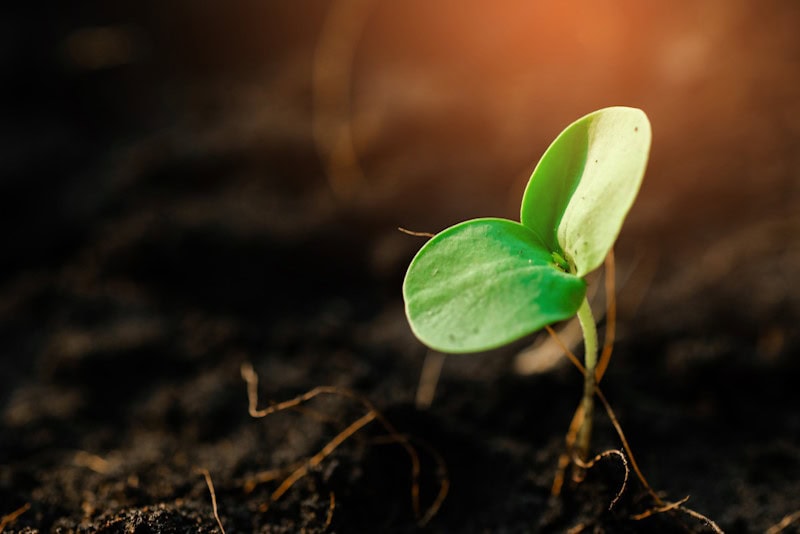
If you’ve been in the aquarium hobby for any length of time, you’ve likely experimented with various filtration methods. From canister filters to sponge filters, there’s a lot out there to help keep your tank clean and your fish happy.
But what if I told you that there’s a plant that could not only add to the aesthetics of your aquarium but also work as a natural filter?
Meet the mangrove—a plant that might just be the ultimate freshwater tank filter!
Why Filtration Matters in Freshwater Tanks
The Role of Filtration
Filtration in a freshwater tank is non-negotiable. It’s like the lungs of your aquarium, working tirelessly to remove toxins, waste, and uneaten food that can build up over time. Without proper filtration, your tank can quickly become a toxic environment for your fish, leading to stress, disease, and even death.
But filtration does more than just keep the water clear; it maintains the delicate balance of your tank’s ecosystem, ensuring your aquatic pets live in a healthy and stable environment.
Traditional Filtration Methods
When I first started keeping fish, I went through the usual rounds of filtration systems—hang-on-back filters, internal filters, and even those super powerful canister filters. Each had its merits, but they also had their drawbacks.
Maintenance was often a hassle, and I found that some systems could be a bit too aggressive, sucking in smaller fish or delicate plants. Plus, let’s be honest: those filters don’t exactly add to the beauty of your tank.
Plants as Natural Filters
How Plants Contribute to Filtration
That’s when I started looking into plants as part of my filtration strategy. Plants are natural filters—just like in nature, they help absorb excess nutrients, produce oxygen, and even break down waste products. In my experience, adding plants to my tank was a game-changer.
Not only did my water quality improve, but the overall health of my fish got better, too. It’s like adding a little slice of nature to your tank, and the results speak for themselves.
Why Not All Plants Are Equal
But here’s the catch: not all plants are created equal when it comes to filtration. Some plants are better at absorbing nutrients and breaking down waste than others. I tried a bunch—Java ferns, Anubias, and even some floating plants like duckweed.
They all helped, but I still found myself battling algae and having to clean my tank more often than I wanted. That’s when I discovered mangroves, specifically red mangroves (Rhizophora mangle), and everything changed.
Meet the Mangrove: Nature’s Filtration Powerhouse
What Are Mangroves?
Mangroves are fascinating plants. In the wild, they’re known for their ability to thrive in harsh coastal environments, where they help protect shorelines from erosion and filter out pollutants from the water. But what’s truly amazing is that these hardy plants can also be grown in aquariums, where they bring their natural filtration skills to your tank.
Mangroves in Nature vs. Aquariums
In their natural habitat, mangroves play a crucial role in maintaining the health of coastal mangrove ecosystems. They filter out sediments and pollutants, stabilize the shoreline, and provide a habitat for countless marine species.
When you introduce mangroves to your aquarium, you’re essentially bringing those same benefits into your tank. They absorb nitrates, phosphates, and other harmful chemicals, helping to keep your water clean and clear.
The Benefits of Using Mangroves as a Freshwater Tank Filter
Natural Toxin Removal
One of the biggest benefits of adding mangroves to your freshwater tank is their ability to remove toxins naturally. In my own tanks, I noticed a significant drop in nitrate levels after introducing mangroves. These plants are incredibly efficient at absorbing nitrates, which are a byproduct of fish waste and decaying organic matter.
High nitrate levels can lead to algae blooms and poor water quality, but with mangroves, that issue becomes much more manageable.
Oxygenation and Habitat Enhancement
Mangroves also contribute to oxygenation. Their roots and leaves work together to produce oxygen, which is essential for the health of your fish and other aquatic life. Plus, those intricate roots aren’t just pretty to look at—they provide hiding spots and breeding grounds for fish and invertebrates.
I’ve seen shy fish become more confident and active after adding mangroves to their tank, thanks to the additional cover and complexity these plants provide.
Aesthetic Appeal
Let’s not forget the aesthetic appeal. Mangroves have a unique look that can really set your tank apart. Their long, arching roots create a striking underwater landscape that’s both natural and eye-catching. And as they grow, they can develop an impressive root structure above the waterline, adding a dynamic vertical element to your tank.
In my experience, guests are always intrigued by the look of mangroves in my aquarium—it’s a great conversation starter!
Getting Started with Mangroves in Your Freshwater Tank
Tank Size and Setup
Now, if you’re thinking about adding mangroves to your freshwater tank, there are a few things to consider. First, they do best in larger tanks—at least 20 gallons or more—because they need space for their roots to spread out. You’ll also want to make sure your tank has an open top or a way for the mangroves to grow above the waterline, as they need access to air to thrive.
Planting and Care Instructions
When it comes to planting, mangroves are pretty straightforward. You can either plant them in the substrate or use a floating method where the roots dangle into the water.
I’ve tried both, and while planting in the substrate gives them a more secure base, the floating method allows for more flexibility in placement. Just make sure the roots are submerged, and the leaves are above water.
As for care, mangroves don’t require a ton of maintenance, but there are a few things to keep in mind. They need a lot of light—ideally 10-12 hours a day—so you might need to invest in a good aquarium light. They also appreciate regular misting with fresh water to prevent salt buildup on their leaves, which can happen even in freshwater tanks due to evaporation.
Compatibility with Fish and Other Tank Inhabitants
One of the best things about mangroves is how well they get along with other tank inhabitants. They’re compatible with most freshwater fish, especially those that enjoy a bit of cover like tetras, gouramis, and even some cichlids.
The roots provide great hiding spots for fish and can even serve as a breeding ground for some species. However, be mindful of root growth—it can become quite extensive, so make sure your tank mates have enough space to swim freely.
Common Myths and Misconceptions About Mangroves in Aquariums
Do Mangroves Only Work in Saltwater Tanks?
A common misconception is that mangroves are only suitable for saltwater or brackish tanks. While it’s true that they thrive in those environments, mangroves can also do incredibly well in freshwater setups.
I’ve been growing mangroves in my freshwater tanks for years with great success. Just be sure to provide them with the right conditions, and they’ll reward you with clean, clear water and a stunning tank aesthetic.
Will Mangroves Overgrow and Take Over My Tank?
Another concern is that mangroves might overgrow and take over the tank. While they can grow quite large in the wild, in an aquarium, their growth is much more controlled. Regular pruning will keep them at a manageable size.
I usually trim mine every few months, and it’s no more work than trimming any other plant in the tank. Plus, pruning encourages new growth, making the plant even bushier and more attractive.
Are Mangroves Too Difficult for Beginners?
If you’re new to the hobby, you might think mangroves are too challenging to care for, but that’s not the case! With a bit of research and the right setup, mangroves can be a rewarding addition to your tank, even for beginners.
They’re hardy plants that can tolerate a range of conditions, and once they’re established, they’re surprisingly low-maintenance. I often recommend them to friends who are just getting into the hobby and looking for something a little different to add to their tanks.
Mangroves have been a game-changer in my aquariums, and I’m confident they could do the same for you. Whether you’re looking for a natural way to keep your tank clean or just want to add a unique element to your setup, mangroves are worth considering.
They’re not just a beautiful addition—they’re a powerful filtration tool that can help you maintain a healthy, thriving tank with less effort.
So, why not give mangroves a try? You might just find that this plant is the ultimate freshwater tank filter you’ve been searching for.
How Do I Choose My Very First Plant?
So you have learned about the incredible benefits of adding mangrove plants to your tank, but you still don’t know which exact plant to add to your specific tank size?
Don’t worry, because we’ve created an easy Step-by-Step guide to help you with your selection process.
Click the button below to find out which plant is perfect for your aquarium.

 Cart is empty
Cart is empty 
